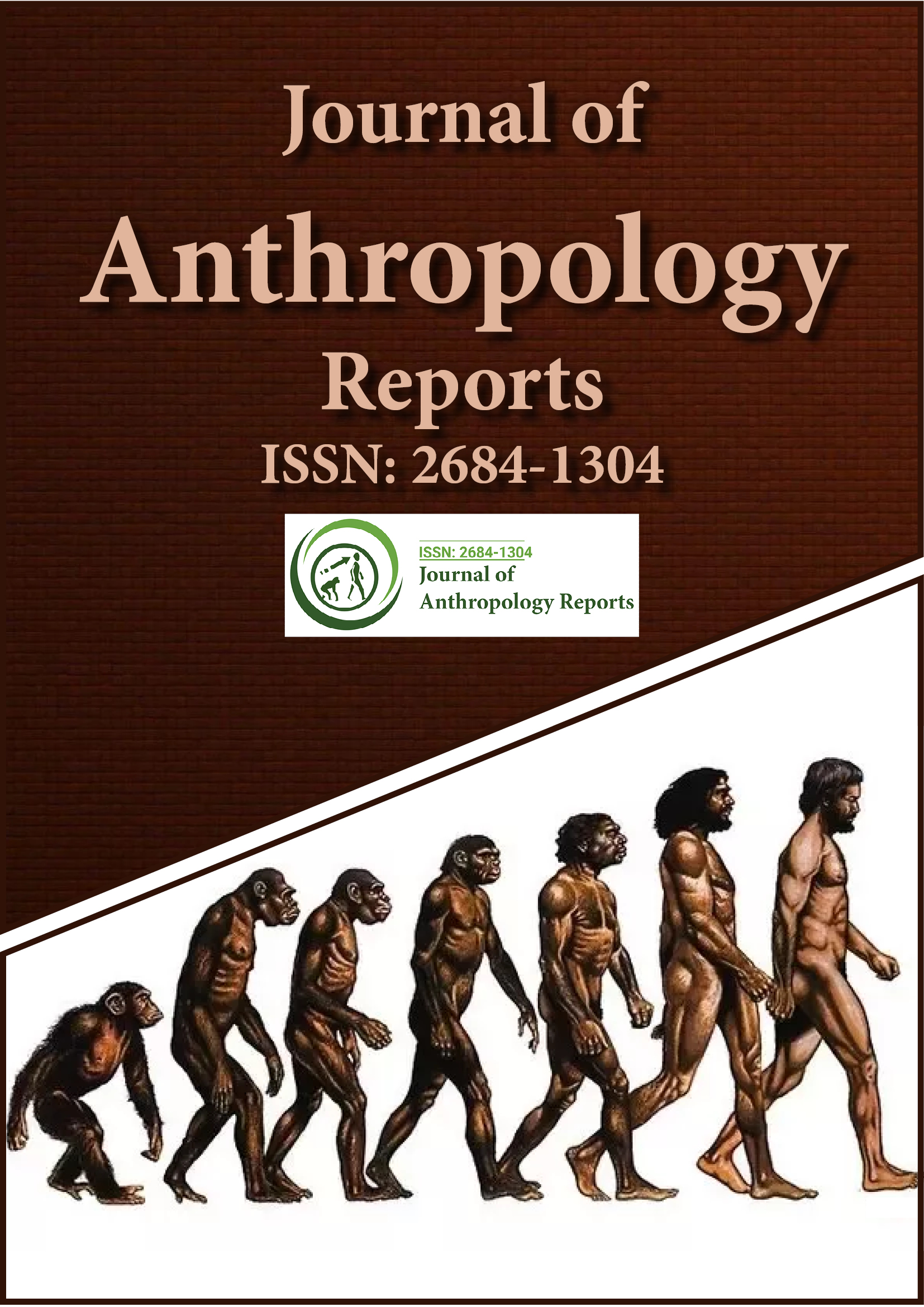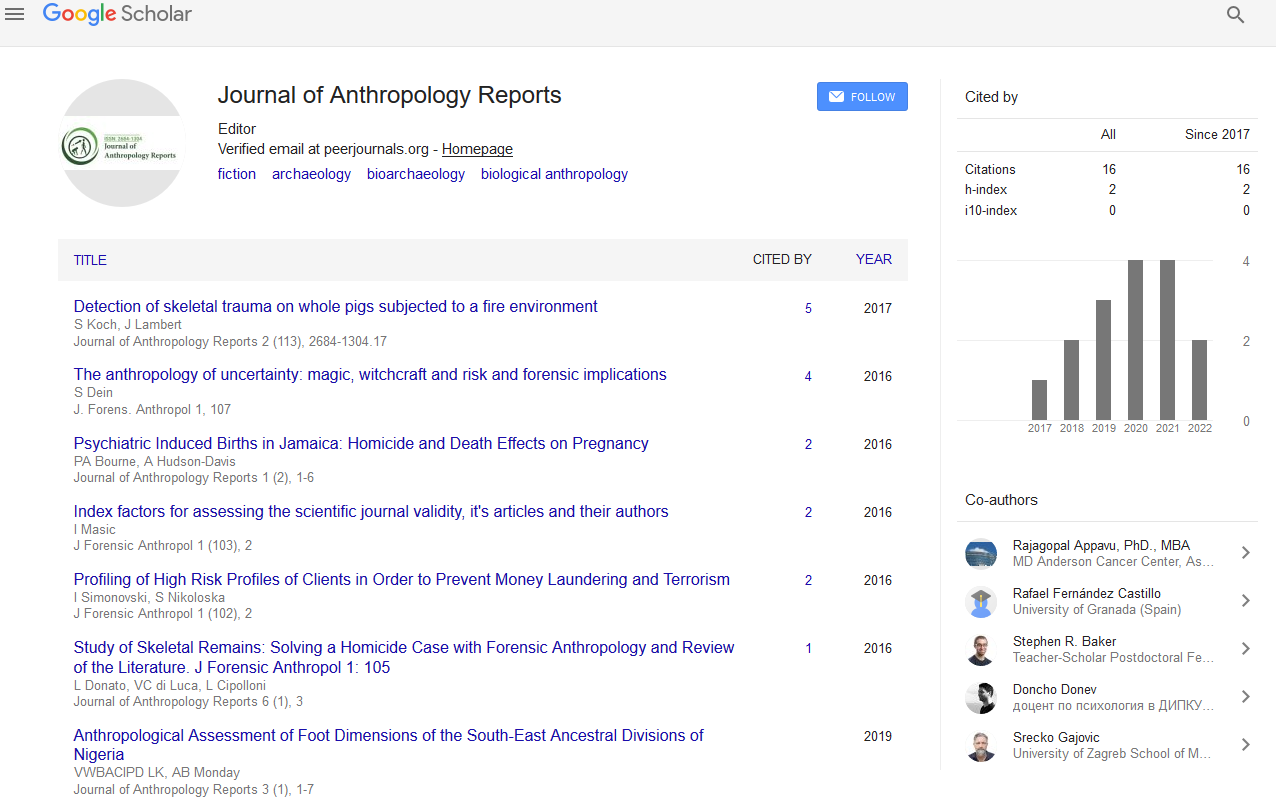Indexed In
- RefSeek
- Hamdard University
- EBSCO A-Z
Useful Links
Share This Page
Journal Flyer

Open Access Journals
- Agri and Aquaculture
- Biochemistry
- Bioinformatics & Systems Biology
- Business & Management
- Chemistry
- Clinical Sciences
- Engineering
- Food & Nutrition
- General Science
- Genetics & Molecular Biology
- Immunology & Microbiology
- Medical Sciences
- Neuroscience & Psychology
- Nursing & Health Care
- Pharmaceutical Sciences
Perspective - (2023) Volume 6, Issue 2
Symbolic's Importance in Interpretive Anthropology
Sheldon Nakhaeizadeh*Received: 12-Jun-2023, Manuscript No. JFA-23-21906; Editor assigned: 14-Jun-2023, Pre QC No. JFA-23-21906 (PQ); Reviewed: 28-Jun-2023, QC No. JFA-23-21906 (QC); Revised: 05-Jul-2023, Manuscript No. JFA-23-21906 (R); Published: 14-Jul-2023, DOI: 10.35248/2684-1304.23.6.164
Description
Symbols are utilized in anthropology in the manner that Clifford Geertz and others have characterized them as culturally ascribed meaning systems. Firth, who attempted to apply Peirce's definitions to anthropology, discovered that it was difficult to adhere to Peirce's classification because, in practice, meanings varied due to cultural meanings being contextual and shifting with context. Different actors and the same actor may interpret the same symbol or attribute in different ways in different situations. For instance, a devotee may relate to an image as if it were a real person, rather than an icon.
The qualities or meanings that symbols may have are not what give them their meaning. The relationships people have with them and with one another indicate this.
These meanings are emotionally experienced during social interaction, key symbols, according to Ortner, are specific items, themes, or stories that, among other possibilities, express a culture's most fundamental values and goals. She has even provided a method with five indicators for determining the most important cultural symbols; to be specific, they are referenced as socially significant by individuals bearing that culture, they stimulate feelings, both good or pessimistic, however are seldom excused with detachment, they continue to return in various settings, are alluded to and addressed in numerous ways, there are stories and social elaborations around them and they are likewise dependent upon restrictions and limitations. All key images are in the public space for they are all in all common. Other examples include animals, practices, folktales, and narratives. Mary Douglas has devoted her research to determining whether symbols are merely neutral expressions or whether they actually influence social circumstances to produce effects that may differ from society to society.
The term "ritualism" refers to a symbol that has no meaning and is only used as a routine by members of society who otherwise have no inner connection to what they are doing. Body symbolism is a central component of symbolic theory.
The student must first refer to Max Weber's work in order to comprehend the interpretative approach. Weber considered sociology as a comprehensive science of social action, emphasizing the importance of understanding the meaning attributed by the actor to their actions. His explanations of ritual symbolism, like Turner's, deviated significantly from the positivist approach, which held that any action was understood by the meaning given to it by the observer or anthropologist.
To Weber, one requirements to figure out the activity regarding the entertainer's edge of reference and furthermore when they comprehend something as objective, it is again normal according to the information on the entertainer.
As a result, the interpretative method views and comprehends the world from the actor's perspective. He defined rational action in terms of a value and a goal, both of which are always connected to one another. The interpretative framework searches for meanings within the cultural cognitive map using a high level of qualitative depth and taking into account the actors' subjective interpretations. Gluckmann had looked into the symbolic nature of rituals. Symbolism has been utilized by theorists of all kinds and continues to be a hallmark of anthropological analysis.
Citation: Nakhaeizadeh S (2023) Symbolic's Importance in Interpretive Anthropology. J Anthropol Rep. 6:164.
Copyright: © 2023 Nakhaeizadeh S. This is an open-access article distributed under the terms of the Creative Commons Attribution License, which permits unrestricted use, distribution, and reproduction in any medium, provided the original author and source are credited.

